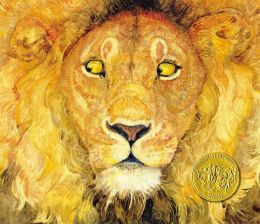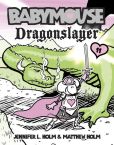
http://ecx.images-amazon.com/images/I/5159YSVG1PL._SL500_PIsitb-sticker-arrow-big,TopRight,35,-73_OU01_AA300_.jpg
Ga'g, Wanda. 2006. Millions of Cats. Ill. by Wanda Ga'g. New York: Puffin Books. ISBN: 0-14-240708-9.
Millions of Cats by Wanda Ga'g tells the tale of a very old couple who aren't happy because they are lonely. One day the woman tells the man that she wants a sweet little fluffy cat and he sets out to find one for her. After walking a very long time he finds a hill covered in cats, "...hundreds of cats, thousands of cats, millions and billions and trillions of cats."! So he decides to choose the prettiest cat to take home to his wife. But one by one he chooses all the cats because he cannot decide which one is best. When he arrives home with trillions of cats his wife tells him that they can't possibly feed so many and they decide to let the cats decide which one they should keep. Soon the cats are fighting among themselves about who is the prettiest and eventually eat each other up, leaving one frightened kitten hiding in the grass. The couple asked the kitten how she survived and she replies that she is homely so she had no quarrel with the other cats who thought they were pretty, so they left her alone. The old woman bathed the kitten, brushed its fur, and fed it milk each day until it grew into a beautiful cat that lived happily ever after with the old couple.
Originally published in 1928 Millions of Cats is a classic picture book that has timeless appeal. The story is easy to relate to and the black ink illustrations are full of detail that draw the reader into the page. Children will understand the loneliness the old couple feels since they have no children at home and can enjoy the journey the old man takes in an effort to please his wife. The solution the couple finds to their dilemma over choosing the right cat relieves them of making a judgement about appearance and results in a winning situation for all. The repeated lines encourage children to read along adding to the experience of the story.
When viewing the first page of the book, the reader assumes the ink drawings will be rather simple, but upon turning the page a full layout reveals the great attention to detail that helps the reader believe that millions and trillions of cats are living on the hill. Children will have fun examining each page to uncover the variety of cats depicted as the old man tries to make his decision. They will believe that the cats can empty a pond and eat all the grass in a meadow as they travel to the cottage where the old woman waits because cats cover every possible trail. They will feel the old couple's fear as they flee the snarling quarreling mass of cats that threaten to spill out of the boundaries of the illustration. And, surely, they will agree with the old man at the end of the story when he declares the cat "the most beautiful in the whole world."
Millions of Cats is a delightful picture book that continues to engage and entertain children eighty-five years after being published. The only precaution to be taken is to put away the crayons before the children decide to color the lovely black ink drawings.
Wanda Ga'g was awarded two Newbery Honors, one in 1929 for Millions of Cats and one in 1934 for The ABC Bunny. She also received two Caldecott Honors, one in 1939 for Snow White and the Seven Dwarfs and the other in 1942 for Nothing at All.
Millions of Cats is included in School Library Journal's "One Hundred Books that Shaped the Century" where the book is noted for its "innovative design and strong storyteller's cadence". The New York Times calls Millions of Cats "A perennial favorite."
A picture book receiving a Newbery Honor is unusual, so I would like to explore the history of Millions of Cats further in regard to why the Newbery committee chose it. This is a good example of a picture book that can be used to engage older children in a literary exploration. We could compare and contrast the Newbery books of the time to discover what made them stand out as compared to other books published then and also discuss why one book becomes a classic when so many others do not.
Amazon. Editorial reviews. http://www.amazon.com/Millions-Edition-Picture-Puffin-Books/dp/product-description/0142407089/ref=dp_proddesc_0?ie=UTF8&n=283155&s=books. (Accessed Septembet 6, 2013.)
Ortakales, Denise. 2002. Wanda Ga'g. http://ortakales.com/illustrators/gag.html. (Accessed September 6, 2013.)Amazon.





